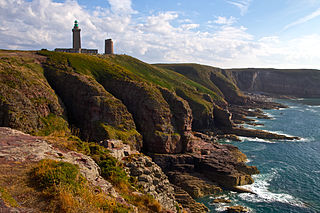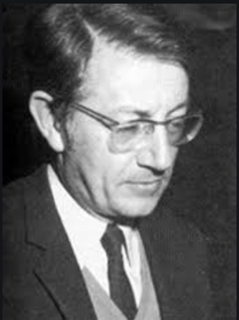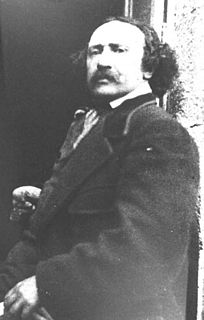Bibliography
- Hommage, museum of Morlaix, January 20 to March 6, 1989.
- An Association of the Friends of Yves Febvre exists in Morlaix.
- An Association of child welfare bearing the name of Yves Febvre operates in the Somme department.
Yves Le Febvre, (December 24, 1874 - January 21, 1959), was a leftist and anticlerical Breton writer and politician.
Born in a middle-class family in Morlaix, Finistère, he studied law in Rennes then in Paris, becoming a Doctor of Law in 1901. A supporter of Alfred Dreyfus, he resigned from the bar of Paris, and registered with the bar of Morlaix, but practiced only rarely. He later became Justice of the Peace in Plouescat, Finistère. He belonged to the urban middle-class and French-speaking, anticlerical and republican faction, which was organized from 1899 in the Association des Bleus de Bretagne (Association of Breton Blues).
In March 1900, he created with Charles Brunellière the Socialist Federation of Brittany, at a congress in Nantes. He became very active as a political journalist in the journal Breton Socialiste which was succeeded by Réveil du Finistère, in which he developed a legislative programme for republican and socialist rural politics.
A freethinking Socialist, he wrote a number of critical studies of the historical myths created by the nationalistic and often reactionary "Breton movement". These were published as the book La Bretagne agenouillée (Brittany on its Knees). He left the socialist International in 1911 for radicalism and devoted himself thereafter to literature. He is now known primarily for his literary works and journalism, such as the Celtic Tales, the Barbarian Trilogy and especially Land of Priests. He ran the journal Breton Thought from 1913 to 1925.
An official of Court of Appeal at Amiens after World War I, Yves Le Febvre became president of the Supporters of Morally Abandoned Children of the Somme, becoming very active in the group's role in assisting neglected and criminalised children who were victims of the devastation caused by the war.

Brittany is a peninsula, historical country, and cultural area in the west of modern France, covering the western part of what was known as Armorica during the period of Roman occupation. It became an independent kingdom and then a duchy before being united with the Kingdom of France in 1532 as a province governed as a separate nation under the crown.

Brittany ; Gallo: Bertaèyn[bəʁtaɛɲ]) is the westernmost region of Metropolitan France. It covers about four fifths of the territory of the historic province of Brittany. Its capital is Rennes. It is one of the two Regions in Metropolitan France that does not contain any landlocked departments, the other being Corsica.

Morlaix is a commune in the Finistère department of Brittany in northwestern France. It is a sub-prefecture of the department.
The abbé Jean-Marie Perrot, in Breton Yann Vari Perrot, was a Breton priest, Breton independentist assassinated by the Communist resistance. He was the founder of the Breton Catholic movement Bleun-Brug.

Loïc Gwenc'hlan Le Scouëzec was a Breton writer and Grand Druid of Brittany.

This page concerns the prehistory of Brittany.

Léon Fleuriot was a French linguist and Celtic scholar, specializing in Celtic languages and the history of Gallo-Roman and Early Medieval Brittany.

François-Marie Luzel, often known by his Breton name Fañch an Uhel, was a French folklorist and Breton-language poet.

Anatole le Braz, the "Bard of Brittany", was a Breton poet, folklore collector and translator. He was highly regarded amongst both European and American scholars, and known for his warmth and charm.

The Ligue des bleus de Bretagne was a liberal organisation in Brittany founded in 1899, dedicated to promoting the ideals of the Enlightenment and the French Revolution in Brittany, and combating the influence of the aristocracy and clergy. The colour blue was chosen to contrast with the conservative "whites" and to emphasise their distinction from the Communist "reds". The term dates back to the Revolt in the Vendée when the counter-revolutionary Whites called the troops of the revolutionary government "the blues".

Plourin-lès-Morlaix is a commune in the Finistère department of Brittany in north-western France. It lies within the arrondissement of Morlaix.
James Bouillé was a French architect based in Brittany.

Erwan Berthou was a French and Breton language poet, writer and neo-Druidic bard. His name is also spelled Erwan Bertou and Yves Berthou. He also used the bardic pseudonyms Kaledvoulc'h, Alc'houeder Treger and Erwanig.
Adolphe Yves Marie Le Goaziou was a bookseller, publisher and member of the French Resistance in wartime Brittany.

Joseph Loth was a French linguist and historian who specialised in the study of Celtic languages.

The Revolt of the papier timbré was an anti-fiscal revolt in the west of Ancien Régime France, during the reign of Louis XIV from April to September 1675. It was fiercest in Lower Brittany, where it took on an anti-lordly tone and became known as the revolt of the Bonnets rouges or revolt of the Torrebens. It was unleashed by an increase in taxes, including the papier timbré, needed to authenticate official documents.

Henri-Georges Dottin was a French philologist, Celtic scholar and politician. His magnum opus, La langue gauloise (1918), remained the reference introduction to the Gaulish language until the publication of Pierre-Yves Lambert's La langue gauloise in 1994. It is still widely used today as a textbook in Celtic studies.
Paol Keineg is a Breton-American writer and poet born in Quimerc'h (Brittany).

The long-distance hiking trail 34 is a French coastal path that starts from Mont-Saint-Michel (Manche) and ends in Saint-Nazaire (Loire-Atlantique). It runs along almost the entire coast of the Brittany region from Mont Saint-Michel and, beyond the limit between Morbihan and Loire-Atlantique, to the mouth of the Loire. It stretches over 1,700 kilometres (1,100 mi). It largely follows former customs paths. These paths, gradually abandoned during the first half of the 20th century, allowed customs officers to patrol the coast from their guardhouses, located at key observation points on the Brittany coast.
René Quéré was a French painter, illustrator, ceramist, and teacher.